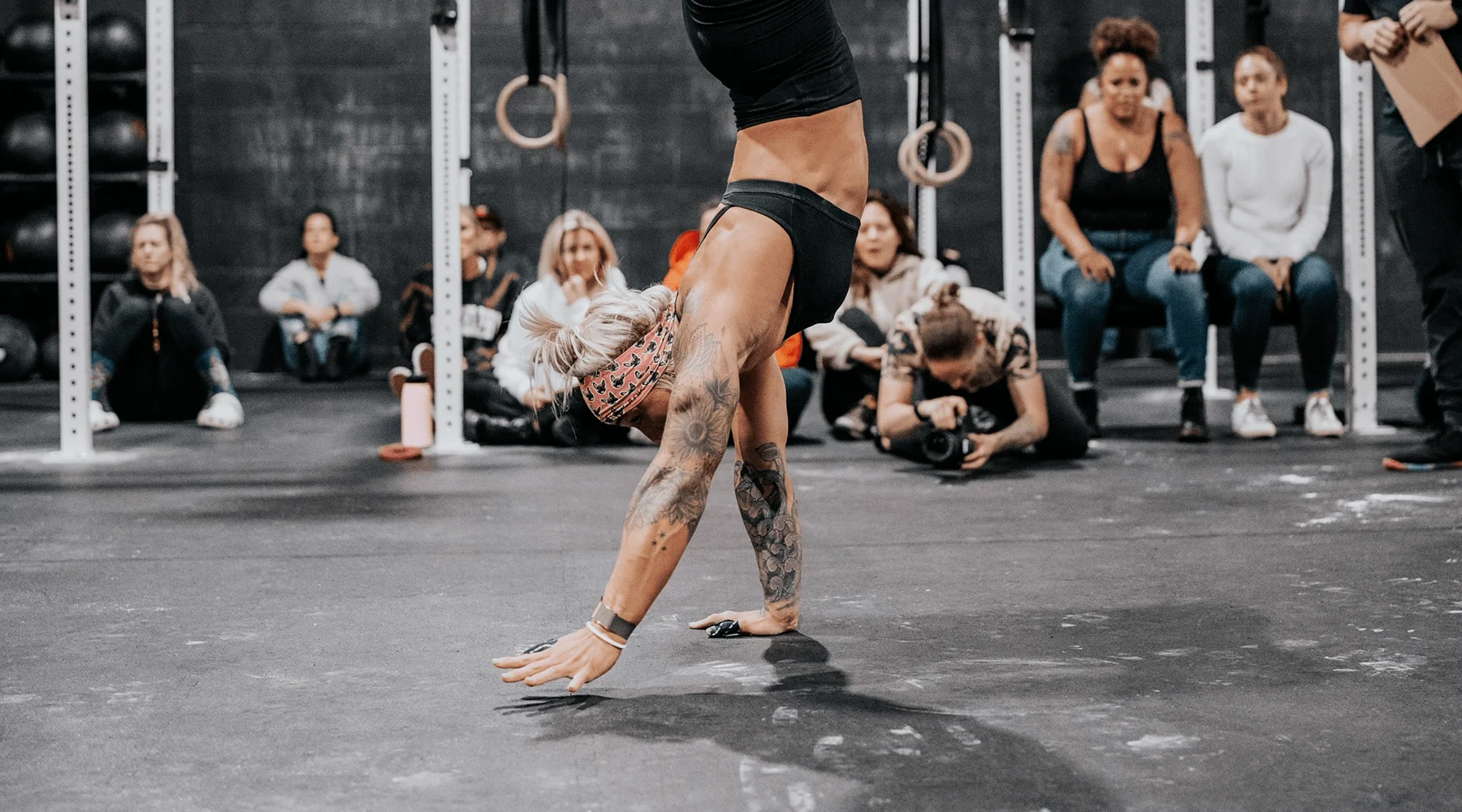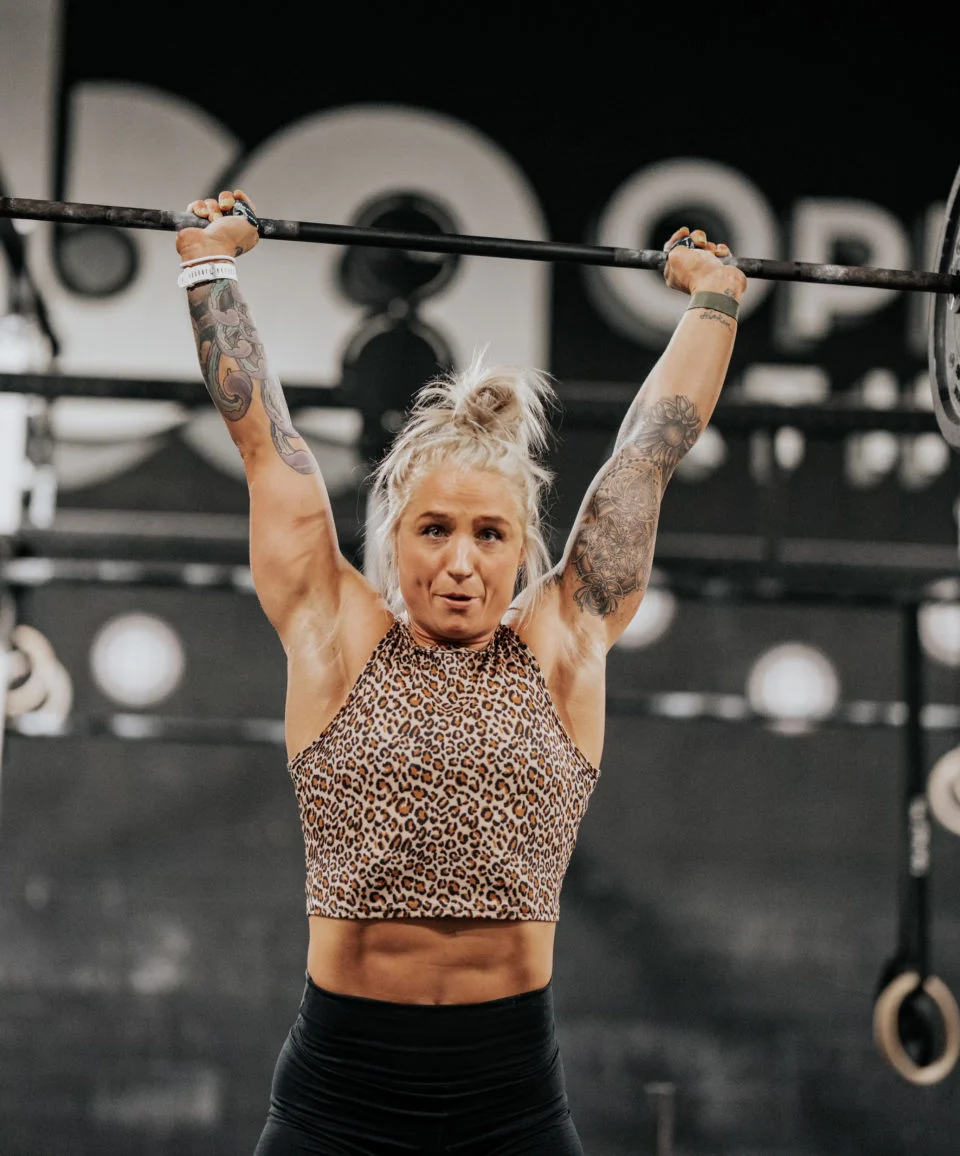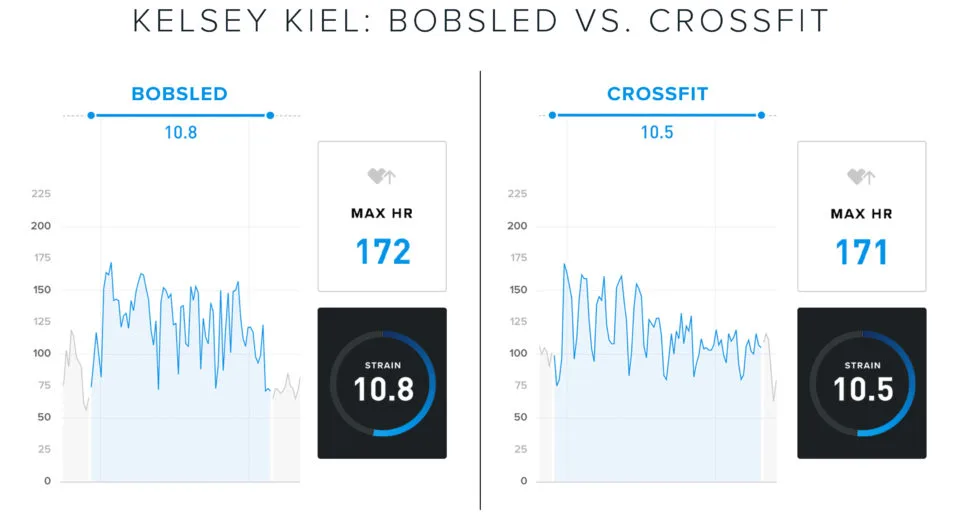Topics
- Article
- CrossFit
- Member Stories
Kelsey Kiel Talks Bobsledding, Heart Rate & CrossFit Games Team Quarterfinals

How does sliding down a mountain at 85 miles per hour affect your WHOOP data?
We spoke with 3-time CrossFit Games athlete Kesley Kiel about her experience trying out for the USA Bobsled Team, the type of training she did and its impact on her WHOOP metrics, as well as her return to CrossFit and competing with her team in the Quarterfinals.
Moving To Lake Placid To Persue BobsledDing
WHOOP: What made you decide to give bobsled a try? Kelsey Kiel: The 2020 CrossFit season was rocked by COVID. After I had secured my individual ticket to the Games, it was rescinded due to them changing how people could qualify. That came at a time in my life that things were shifting a bit, and I knew I was going to be moving away from Boston. I actually received an Instagram message from Kaillie Humphries, one of the best bobsled pilots in the entire world (I didn't know that at the time). She reached out to me and asked if I would ever give bobsled training a shot. Obviously, I’d trained CrossFit and I played soccer in college, but I knew nothing about bobsled. I was about to move to Vegas to continue working with my CrossFit coach when I got a phone call from Kaillie letting me know that USABS would probably have a bed for me at the Olympic Training Center in Lake Placid, NY... so I went for it. W: You’ve been a WHOOP member for a long time, when you first started training for bobsled as opposed to CrossFit, was there anything you noticed that stood out in your data? KK: I feel like the biggest change, and this was with my WHOOP data, with my nutrition, everything, was that I was not burning as many calories and my training volume significantly decreased. I was ‘not working as hard’ as I was when I was training CrossFit for six hours a day. It was a different kind of training. Once I got to Lake Placid it soon became clear to me that CrossFit wasn't going to be the training that I needed to do in order to try to be good at the sport. I had to completely shift my mindset and my training.

Kelsey needed to adjust her mindset and training style in order to make the transition from CrossFit to Bobsled.
I quickly saw that my strain was a lot lower. It was cool to notice the changes in my data once I started understanding what was required of a bobsledder and what that training looked like. Sometimes people can get wrapped up in a CrossFit mentality and think ‘I need to get a good/high day strain and I need to work really hard today, I need to burn a lot of calories.’ I had to work on my mindset and change that around for what I considered a ‘successful day.’ WHOOP helped me gauge different aspects of my training (like heart rate, HRV, training duration, etc) to see what impact this new way of training had on my body.
Bobsled TRaining vs. CrossFit
W: How did bobsled training differ? KK: Bobsled is significantly more sprint-specific training. It was much less of ‘Let's go, go, go and try to hang on and survive’ and more of like ‘Run a 45-meter sprint as fast as you can and then immediately take the time necessary to fully recover.’ Maybe you do that 6 times while resting 2-3 minutes in between each sprint, and that's your workout. When I first started doing all of my sprint drills, my warmup always took significantly longer than the actual training piece because I had to get my body primed and ready to sprint all out. It was always interesting to see because my WHOOP would log my warmup as the workouts. I was working so hard because it was all brand new stuff for me. I specifically nerded out on different levels of my heart rate for things within my warm-ups, and in my actual training pieces. W: Ah, glad you mentioned heart rate. We’re very curious to hear what you’re heart rate looked like when you got in the sled for the first time. KK: Yeah, so you're exerting a lot of energy and then staying really still, but your heart rate is still really high. As a break woman, you're warming up for an hour leading up to a 6-second all-out sprint. You're sprinting and pushing as fast as you can, then you're hopping in and sitting hunched over, bracing until you pull the brakes at the bottom. When you’re in the back of the sled you need to make sure you’re not moving much, so you hold onto the sled frame, brace your core and 'enjoy' the ride. In those first couple months when I was getting used to the sport, I'm sure that my heart rate was even higher in the sled. I found myself being so out of breath at the bottom of the track because I exerted so much energy at the top and then I was holding my breath on the way down since I was so nervous. At the very end my heart rate would also be a little bit crazy, I’d be extremely out of breath and the adrenaline would be hitting hard. Even knowing the science, understanding the g-forces and knowing I couldn’t fly out of the sled, I still always thought I was going to fly out of the sled. It was a nerve-wracking experience.

Samples of Kelsey's heart rate and strain data comparing a training session in the bobsled to a CrossFit workout.
Returning to CrossFit & Competing in the Quarterfinals
W: After taking roughly a year off from serious CrossFit training, what has it been like getting back into competitive shape and what have you seen in your data? KK: Something I need to personally work on in order to be a better CrossFitter is running, so I’m on a schedule where I'm running every Monday morning. Because of that my Monday day strain is always significantly higher than any other day of the week. I've also been doing more steady-state aerobic work on Thursdays, trying to build up my aerobic capacity a bit. I’ll have the WHOOP Strain Coach on and watch so I can keep my heart rate in the right zone. It’s cool to see the distance I’m able to run increase with my heart rate in that same zone for the same amount of time. That’s really motivating on these miserable days of running, to see progress and that I can achieve more while keeping my heart rate down. W: Alright, let’s talk about the CrossFit Games quarterfinals. Your team tied for 12th in the world, how do you feel about the performance? KK: It was our first showing as a team, and I’m really proud of how we did. We had some good team wins, mentally and physically. We're really happy with where we are at right now and definitely excited to be able to get on the competition floor with some of the teams next to us and feel that energy. W: Do you have a highlight you’d like to share? KK: As I mentioned, I've been working a lot on my running and capacity work, and burpees have always been a hard movement for me. So when I saw that there was a workout with burpees and shuttle runs, I was nervous. Honestly I was scared of it, I didn’t want to let my team down. I was thinking it would just be damage control, but we didn’t do that badly at all (38th in North America). That was our first workout as a team where we had to be synchronized and we had to be able to work together as a unit of four. And we did. My anxiety was really high going into that workout, but we supported each other and got through it. For me, that was probably the biggest win.